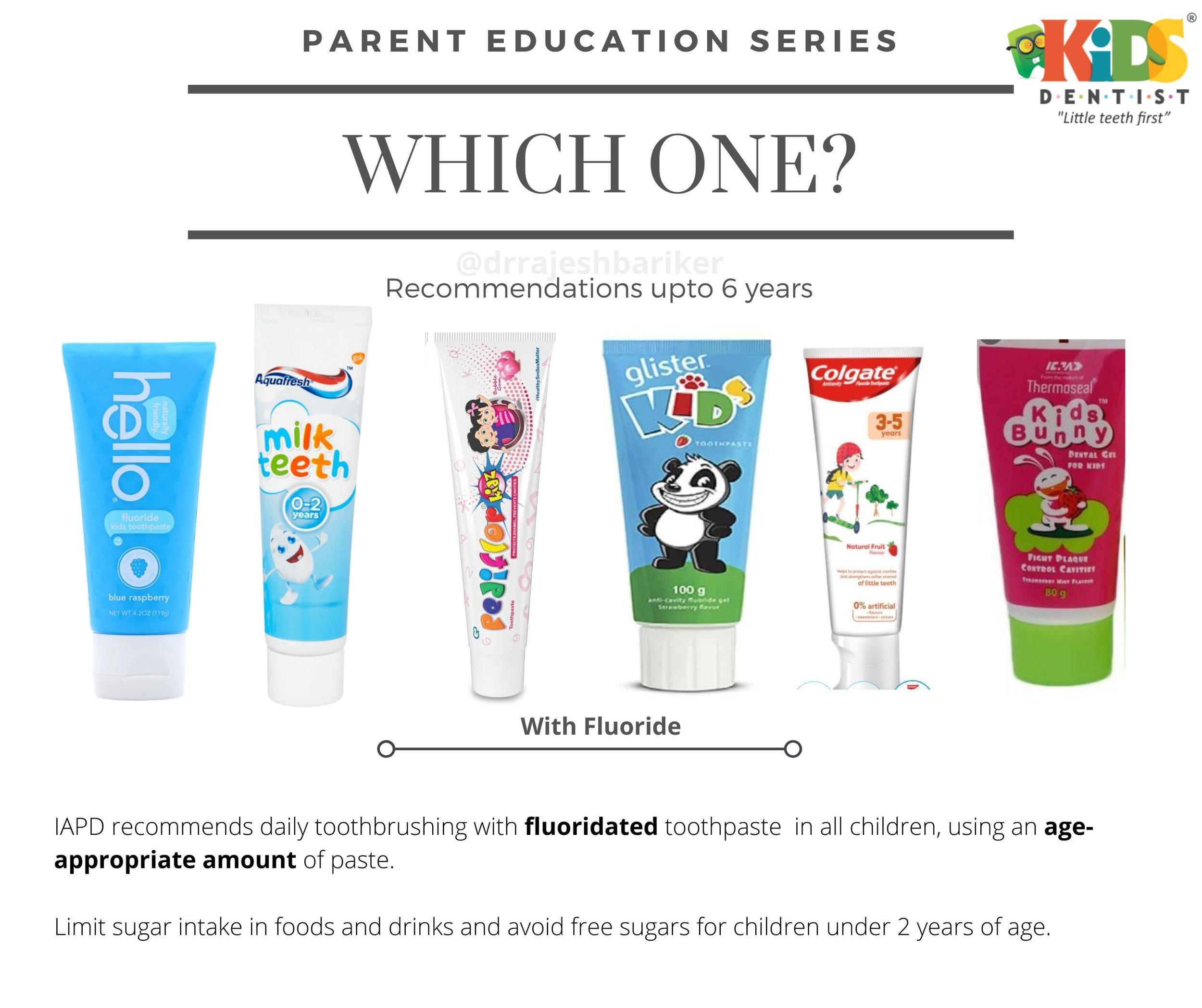
Which one to choose to prevent cavities?
We have discussed about the cavities and their initiation process of cavities and why cleaning a child’s teeth is important right from infancy in my previous posts. The majority of under five year olds whom I routinely come across during my consultations are challenged by a cavities with upper anterior teeth, which appeared to progress rapidly since their initiation.
These are typical signs of Early Childhood Caries (ECC), which in Layman's definition is Tooth decay in pre‐school children which is common, mostly untreated and can have profound impacts on children's lives. Clinically, we define it as the presence of one or more decayed (non‐cavitated or cavitated lesions), missing (due to caries), or filled surfaces, in any primary tooth of a child under age six. The common question often is which toothpaste to prevent cavities.
Prevention of ECC (the resultant complication here of improper cleaning in infants and toddlers) requires multiple approaches and can be structured in three phases
A) Primary prevention includes improving oral health literacy of parents/caregivers and healthcare workers, limiting children's consumption of free sugar in drinks and foods, and daily exposure to fluorides.
B) Secondary prevention consists of the effective control of initial lesions prior to cavitation that may include more frequent fluoride varnish applications and applying pit and fissure sealants to susceptible molars.
C) Tertiary prevention includes the arrest of cavitated lesions and tooth‐preserving operative care.
When do we start using toothpastes?
IAPD (International Association of Pediatric Dentistry) recommends daily tooth brushing with fluoridated toothpaste (at least 1000 ppm) in all children, using an age‐appropriate amount of paste. This has been detailed in my immediate previous post.
Also, as previously emphasized, the first visit to a pediatric dentist needs to happen as soon as the first tooth erupts or by the child’s first birthday. Do not delay this. This counseling session is extremely vital for parents and caregivers understand and improvise if necessary,the preventive measures to dodge cavities.
Now, to keep your child’s mouth as clean as possible, use a soft cloth to wipe his or her gums clean from the start. As soon as the first tooth erupts, begin brushing them with a soft, child-sized toothbrush and a fluoride toothpaste about the size of rice grain. This will help spread the fluoride onto teeth without your child swallowing too much, since he or she can’t really spit yet. Once your child becomes better at spitting (about age 3), use a pea-sized amount of toothpaste and have your child spit after brushing. Keep helping your child brush until at least age five or six.
Why the toothpaste with Fluoride matters?
There is a global consensus that regular use of fluoride (F) toothpaste constitutes a cornerstone in child dental health. In fact, a global survey revealed that most experts addressed F toothpaste as the main reason for the dramatic decline in caries during the last decade of the 20th century. Moreover, toothpaste is probably the most readily available form of F and tooth brushing is a convenient and approved habit in most cultures. Working groups within national Health Technology Agencies have independently and in parallel presented strong scientific evidence that daily tooth brushing with F toothpaste is the most cost-effective, self-applied method to prevent caries at practically all ages.
Do we need to worry if my child swallows toothpaste with fluoride?
Not if you are using the recommended amount of toothpaste for your child’s age and supervising their brushing to prevent unnecessary swallowing. Fluoride toothpaste is recommended for babies and toddlers by the IAPD, ISPPD, AAP, AAPD and ADA.
Note:
The toothpastes shown in the visuals are the ones available for sale in India. Toothpastes and their F concentration can vary across nations. This is an awareness post about child’s oral care and is evidence based upon the latest recommendations.
These recommendations regarding fluoride and non-fluoride pastes could vary from child to child depending upon feeding practices, preventive measures undertaken since infancy, more than three sugar containing snacks or beverages per day, going to bed with bottle and parents with active caries lesions. Speak to your nearest pediatric dentist for individualized assessment and recommendation.
Source:
A) Colak H, Dülgergil ÇT, Dalli M, Hamidi MM. Early childhood caries update: a review of causes, diagnoses, and treatments. J Nat Sci Biol Med. 2013;4(1):29–38. doi: 10.4103/0976-9668.107257.
https://onlinelibrary.wiley.com/doi/full/10.1111/ipd.12490.
B) Early Childhood Caries: IAPD Bangkok Declaration. Pediatr Dent. 2019 May 15;41(3):176-178.